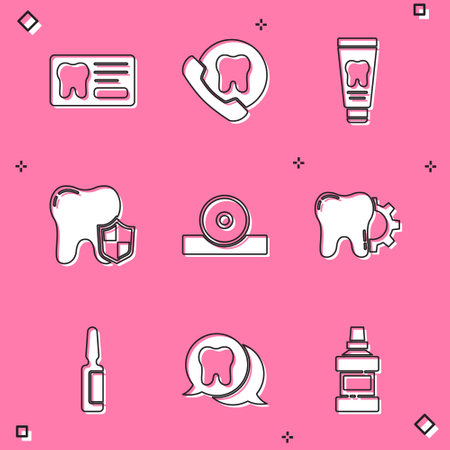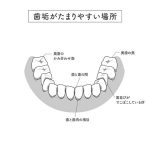1. Introduction: The Quest for a Brighter Smile
A bright, white smile is something many people desire. Whether its for a confidence boost, a special event, or simply to maintain a fresh appearance, teeth whitening has become increasingly popular. With so many options available, it can be challenging to decide which method is best.
Two of the most common approaches are drugstore whitening strips and professional treatments from a dentist. Each has its pros and cons, especially when considering cost, effectiveness, and convenience. Understanding the differences between these options can help you make an informed decision.
Common Teeth Whitening Options
There are various ways to whiten your teeth, but they generally fall into two categories: over-the-counter products and professional treatments.
| Whitening Method | How It Works | Typical Cost | Effectiveness |
|---|---|---|---|
| Drugstore Whitening Strips | Thin plastic strips coated with a whitening gel that contains peroxide. | $20 – $50 per box | Mild to moderate whitening over several weeks. |
| Professional Dentist Whitening | Stronger bleaching agents applied by a dentist for faster results. | $300 – $1,500 per session | Dramatic whitening in one or a few sessions. |
Why People Choose These Options
Many people opt for drugstore whitening strips because they are affordable and easy to use at home. They provide gradual results without requiring a trip to the dentist. However, others prefer professional treatments due to their stronger whitening agents and quicker results, especially for stubborn stains or deep discoloration.
In the following sections, we will compare these two methods in more detail, examining factors such as cost, effectiveness, convenience, and potential side effects.
2. Cost Comparison: Budget-Friendly vs. Professional Investment
When it comes to teeth whitening, cost is often a major deciding factor. Drugstore whitening strips and professional dentist treatments come with very different price tags, but they also offer different levels of effectiveness and longevity. Lets break down the costs associated with each option.
Upfront Costs: Whitening Strips vs. Dentist Treatments
One of the biggest advantages of drugstore whitening strips is their affordability. These over-the-counter products typically range from $20 to $50 per box, depending on the brand and strength. On the other hand, professional whitening treatments performed by a dentist can cost anywhere from $300 to $1,500, depending on the method used.
| Treatment Type | Estimated Cost |
|---|---|
| Drugstore Whitening Strips | $20 – $50 per box |
| Professional In-Office Whitening | $300 – $1,500 per session |
| Custom Take-Home Trays from Dentist | $150 – $400 |
Longevity and Maintenance Costs
The initial cost isn’t the only factor to consider—how long the results last also plays a big role in overall value. Whitening strips generally provide noticeable results for a few weeks to a couple of months, meaning you may need to repurchase them frequently to maintain your bright smile. In contrast, professional whitening treatments tend to last much longer, often six months to two years with proper care.
| Treatment Type | How Long It Lasts | Maintenance Required |
|---|---|---|
| Drugstore Whitening Strips | A few weeks to a couple of months | Frequent reapplication needed |
| Professional In-Office Whitening | 6 months to 2 years | Mild touch-ups recommended |
| Custom Take-Home Trays from Dentist | A few months to over a year | Mild touch-ups as needed |
The Overall Value Perspective
If youre looking for an affordable short-term solution, drugstore whitening strips may be the way to go. However, if you want longer-lasting results with fewer applications, investing in a professional treatment could save money in the long run by reducing the need for frequent touch-ups.

3. Effectiveness: How Well Do They Work?
When choosing between drugstore whitening strips and professional dentist treatments, one of the biggest concerns is how well they actually work. Let’s compare their whitening power, expected results, and how long the effects typically last.
Whitening Power and Expected Results
Both options can effectively whiten teeth, but the level of whitening varies significantly:
| Treatment Option | Whitening Strength | Expected Shade Improvement |
|---|---|---|
| Drugstore Whitening Strips | Mild to Moderate | 1-3 shades lighter |
| Dentist Whitening Treatments | Strong | 5-8 shades lighter |
Drugstore whitening strips contain lower concentrations of whitening agents like hydrogen peroxide, which means they can gradually lighten stains but may not achieve dramatic results. In contrast, professional treatments use stronger bleaching agents and advanced techniques for more noticeable whitening.
How Long Do the Results Last?
The longevity of your whiter smile depends on the treatment method and your lifestyle habits. Here’s a general comparison:
| Treatment Option | Typical Duration of Results | Main Factors Affecting Longevity |
|---|---|---|
| Drugstore Whitening Strips | A few months (typically 2-6 months) | Coffee, tea, smoking, oral hygiene habits |
| Dentist Whitening Treatments | A year or longer (with proper care) | Lifestyle choices, follow-up treatments, maintenance products |
If you frequently consume staining foods or beverages, or if you smoke, your teeth may discolor more quickly after either treatment. However, professional whitening often lasts much longer because it penetrates deeper into the enamel.
The Bottom Line on Effectiveness
If youre looking for a quick and affordable way to brighten your smile by a few shades, drugstore whitening strips can be a good choice. But if you want a more dramatic transformation with longer-lasting effects, professional dentist treatments are the better option. Your decision should depend on your budget, expectations, and how long you want the results to last.
4. Convenience and Ease of Use
When deciding between drugstore whitening strips and professional dentist treatments, convenience plays a major role. Lets take a closer look at how easy each option is to use, including the application process, treatment time, and overall experience.
Application Process
One of the biggest advantages of whitening strips is their simple application. You just peel the strips from their packaging and apply them directly to your teeth. Most drugstore whitening strips are designed to mold to your teeth, making them easy to wear without needing special tools or expertise.
On the other hand, professional whitening treatments require an in-office visit. Depending on the procedure, your dentist may apply a bleaching gel and use a specialized light to accelerate the process. Some treatments also involve custom-fitted trays that need to be worn at home for a certain period.
Treatment Time
The time commitment for each method varies significantly. Whitening strips typically need to be worn for 30 minutes daily over a period of one to two weeks. Some brands offer express versions that work in just a few days.
Dentist treatments, however, can provide noticeable results in just one session that lasts about 60 to 90 minutes. If youre using a take-home kit from your dentist, you may need to wear trays for several hours per day over a couple of weeks.
Overall Convenience
| Treatment Method | Application Process | Treatment Time | Convenience Level |
|---|---|---|---|
| Drugstore Whitening Strips | Easy to apply at home; no dental visit required | 30 minutes daily for 1-2 weeks | High – Can be done anytime at home |
| Dentist Whitening Treatment | Requires an in-office visit; may include take-home trays | 60-90 minutes per session (or longer for take-home kits) | Moderate – Requires scheduling an appointment |
If you prefer flexibility and minimal effort, whitening strips are the easier choice since they allow you to whiten your teeth on your own schedule. However, if youre looking for immediate results with professional supervision, an in-office treatment might be worth the extra effort.
5. Safety and Potential Side Effects
When choosing between drugstore whitening strips and professional dentist treatments, safety is a key consideration. Both methods use bleaching agents, but their concentration and application process can impact potential side effects. Let’s compare the common risks associated with each option.
Common Side Effects of Whitening Treatments
Teeth whitening treatments can lead to temporary discomfort. The most common side effects include:
- Tooth Sensitivity: Some people experience increased sensitivity to hot or cold foods and drinks after whitening.
- Gum Irritation: Whitening agents may cause irritation if they come into contact with the gums.
- Uneven Whitening: Over-the-counter strips may not provide even results, especially if teeth are misaligned.
Comparison of Side Effects
| Whitening Method | Tooth Sensitivity | Gum Irritation | Risk of Uneven Whitening |
|---|---|---|---|
| Drugstore Whitening Strips | Mild to moderate | Mild; possible if strips touch gums | Possible due to uneven application |
| Dentist Treatments | Mild to severe (temporary) | Mild; controlled by a professional | No risk; applied evenly by a dentist |
Minimizing Risks and Discomfort
If youre concerned about sensitivity or irritation, here are some tips to reduce discomfort:
- Use Sensitive Toothpaste: A desensitizing toothpaste can help reduce tooth sensitivity before and after treatment.
- Avoid Overuse: Follow the recommended usage instructions to prevent excessive bleaching.
- Treat Gum Irritation: If your gums become irritated, take a break from whitening and use soothing oral care products.
- Select Professional Supervision: If you have sensitive teeth or existing dental concerns, consult a dentist before whitening.
The Bottom Line on Safety
If you have sensitive teeth or gum concerns, consulting a dentist before starting any whitening treatment is always a good idea. While drugstore whitening strips are convenient and affordable, they may pose a higher risk of uneven whitening and minor irritation. Dentist treatments, though more expensive, offer safer application and better control over potential side effects.
6. Which Option Is Right for You?
Choosing between drugstore whitening strips and professional dentist treatments depends on several factors, including your budget, desired results, and personal preferences. Lets break down the key considerations to help you decide which option best suits your needs.
Comparing Cost and Effectiveness
One of the biggest differences between these two whitening methods is the cost. Whitening strips are significantly more affordable, while professional treatments come with a higher price tag but often deliver faster and more dramatic results.
| Factor | Drugstore Whitening Strips | Dentist Whitening Treatments |
|---|---|---|
| Cost | $20 – $50 per box | $300 – $1,500 per session |
| Effectiveness | Mild to moderate whitening over time | Dramatic results in one or two sessions |
| Treatment Duration | A few weeks for noticeable changes | Immediate or within a few days |
| Sensitivity Risk | Mild sensitivity for some users | Possibly higher sensitivity due to stronger bleaching agents |
| Convenience | Easily used at home, no appointment needed | Requires a visit to the dentist’s office |
Your Lifestyle and Whitening Goals Matter
If youre looking for a simple and budget-friendly way to brighten your smile gradually, whitening strips may be your best bet. They are convenient, easy to use, and can be incorporated into your daily routine without much hassle.
If you need fast and dramatic results—such as for an upcoming event—a professional whitening treatment at the dentists office might be worth the investment. While it costs more, the immediate improvement can make it worthwhile.
Sensitivity and Oral Health Considerations
If you have sensitive teeth or gum issues, you might want to consult with your dentist before using either method. Some people experience irritation from whitening strips, while professional treatments may cause temporary tooth sensitivity due to their stronger bleaching formulas.
The Best Choice for You
The right option ultimately depends on what works best for your budget, timeline, and comfort level. If affordability and convenience are top priorities, drugstore whitening strips could be the way to go. But if you want a more noticeable transformation quickly, a professional treatment might be worth considering.


